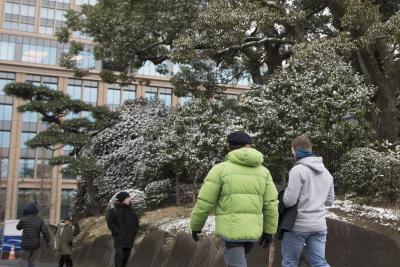Tokyo, Jan 3 (IANS) Heavy snow is expected to hit northern and eastern Japan through Saturday, mainly in mountainous areas along the Sea of Japan coast, due to a winter pressure pattern and a cold air mass, the country’s weather agency said Friday.
As of 5 am local time Friday, 412 centimetres of snow had accumulated in Sukayu in the Hakkoda mountain range in Aomori Prefecture, more than double the average amount, according to the Japan Meteorological Agency (JMA).
The estimated 24-hour snowfall through Saturday morning is expected to be up to 50 centimetres in the Tohoku region, 40 centimetres in the Hokkaido and Niigata prefectures, 35 centimetres in the Kanto-Koshin region and 30 centimetres in the Hokuriku and Tokai regions, said the JMA.
Weather officials called on people to prepare for traffic disruptions, while urging caution against snow that accumulates on power cables and trees, as well as avalanches in snow-covered areas, Xinhua news agency reported.
Winds could intensify along the Sea of Japan coast from northern to western Japan through Sunday, with possible blizzards in some areas, the JMA added.
Heavy snow had blanketed northern Japan on Tuesday, forcing dozens of flight cancellations as many people were traveling for the New Year holidays.
Japan Airlines said it canceled 42 flights to and from the northernmost island of Hokkaido, affecting 6,398 passengers, while All Nippon Airways scrapped 14 flights, affecting 800 passengers.
According to the JMA, heavy snowfall fell in many places in central and northern Hokkaido on Tuesday due to a winter pressure pattern.
Earlier, the average temperature across Japan from September to November in 2024 was the highest since records began in 1898.
The nationwide autumn average was 1.97 degrees Celsius above the normal baseline, breaking the previous record set last year by a significant margin of 0.58 degrees, the data showed.
The JMA had attributed the record-breaking warmth to the effects of global warming and a northward shift in the jet stream, which allowed warm southern air to dominate.
–IANS
int/as





























